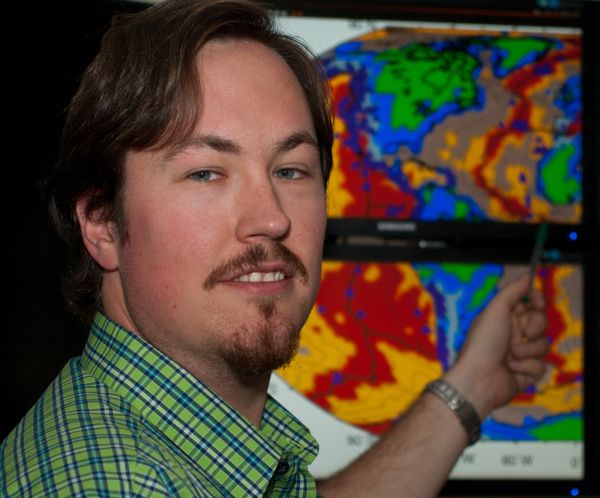DIAS Geophysics Scholar wins 2013 Student Author Award

Andrew Schaeffer of the Geophysics Section (School of Cosmic Physics) has won the 2013 Student Author Award of the Geophysical Journal International. The award has been established to recognise the best papers submitted to the journal by young scientists in the field. Andrew Schaeffer is one of the two 2013 winners, voted for by the journal’s Editorial Board and each receiving a cash prize and a framed certificate. The awards are being announced on the journal website, at the American Geophysical Union Fall Meeting in December 2013 and the European Geophysical Union General Assembly in 2014. Andrew’s paper (“Global shear-speed structure of the upper mantle and transition zone”, by A.J. Schaeffer and S. Lebedev) presents global tomography of the Earth’s upper mantle with an unprecedentedly large waveform dataset. His tomographic model reveals the global structure of the Earth’s tectonic plates and underlying mantle in finer detail than was possible previously. Andrew’s winning paper has been granted Free Access on the journal website.
Leave a Comment
Last Updated: 22nd March 2016 by Anna
DIAS Geophysics Scholar wins 2013 Student Author Award
DIAS Geophysics Scholar wins 2013 Student Author Award
Andrew Schaeffer of the Geophysics Section (School of Cosmic Physics) has won the 2013 Student Author Award of the Geophysical Journal International. The award has been established to recognise the best papers submitted to the journal by young scientists in the field. Andrew Schaeffer is one of the two 2013 winners, voted for by the journal’s Editorial Board and each receiving a cash prize and a framed certificate. The awards are being announced on the journal website, at the American Geophysical Union Fall Meeting in December 2013 and the European Geophysical Union General Assembly in 2014. Andrew’s paper (“Global shear-speed structure of the upper mantle and transition zone”, by A.J. Schaeffer and S. Lebedev) presents global tomography of the Earth’s upper mantle with an unprecedentedly large waveform dataset. His tomographic model reveals the global structure of the Earth’s tectonic plates and underlying mantle in finer detail than was possible previously. Andrew’s winning paper has been granted Free Access on the journal website.
Category: Geophysics Section News & Events
Recent Posts
DIAS Astrophotography competition goes mobile for 2024
Irish scientists are part of groundbreaking discovery with James Webb Space Telescope
Dr Pauline Gagnon (formerly of CERN) to deliver two talks at DIAS
DIAS Professor announced as next President of the European Southern Observatory’s Council
Quake Shake: New programme encourages people to get involved in monitoring earthquakes
Language switcher